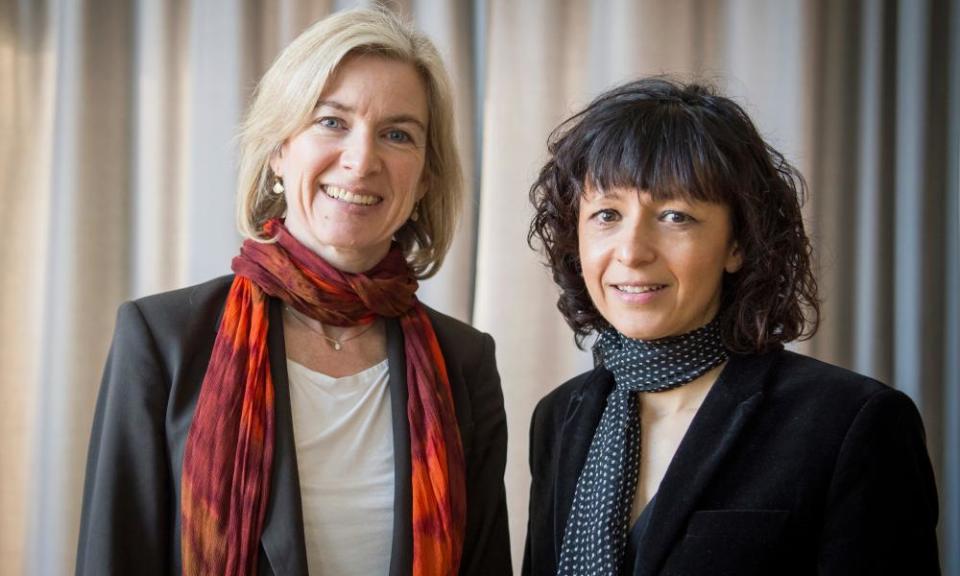How far should we go with gene editing in pursuit of the ‘perfect’ human?

The name He Jiankui is not listed as a registered delegate for the Third International Summit on Human Genome Editing, which is to be held at the Francis Crick Institute in London next month. Yet the disgraced Chinese scientist will be on the minds of most of those attending. He will be a ghost at the feast of science.
Jiankui was responsible for one of the most controversial acts in modern scientific history – as was revealed at the world’s previous genome editing summit, which was held in Hong Kong in 2018. In front of stunned delegates, the researcher, then based at China’s Southern University of Science and Technology in Shenzhen, announced he had changed the genetic make-up of three young girls in a bid to make them resistant to HIV. This modification – made when they were embryos – could then be passed on to future generations.
The experiment is without precedent in modern genetics and was deemed unethical by Chinese authorities. Jiankui was subsequently jailed for three years, though his influence at next month’s science summit will still be profound, said Professor Robin Lovell-Badge, organiser of the forthcoming London summit.
“We will be discussing what has happened to the three children whose physiology he may have altered by genome editing,” said Lovell-Badge, who also chaired the session at which Jiankui revealed his extraordinary biological intervention. “We will also have presentations about the changes that have occurred in China in terms of the law and the ethics governing gene editing. There have clearly been quite substantial changes – for the good.
“And it is important these issues are raised. Genome editing has enormous power to benefit people but we should be transparent about how it is being tried and tested before the technology is put into practice.”
Genome editing was transformed by Jennifer Doudna of the University of California, Berkeley, and Emmanuelle Charpentier, of Max Planck Institute for Infection Biology, in Berlin. Their research was rewarded in 2020 when the pair were given the Nobel prize for chemistry for creating “a technology [that] has revolutionised the molecular life sciences,” in the words of the Royal Swedish Academy of Sciences, which made the award.
The technique developed by Doudna and Charpentier is known as Crispr-Cas9 and it acts like a pair of molecular scissors that can cut a strand of DNA at a specific site. In this way, scientists can alter the structure of genes in plants, animals and humans and in turn induce changes in physical traits, such as eye colour, and disease risk. No introduction of genes from other organisms is involved, a crucial difference from previous forms of genetic manipulation.
Scientists are now looking at genome editing to develop new medical treatments, for example by making changes in individuals with diseases. Candidates include the inherited condition sickle cell anaemia, in which a single gene defect disrupts haemoglobin production with serious consequences for patients, who suffer anaemia because their bodies are starved of oxygen.

By removing a person’s stem cells and then genetically editing them so they start to produce foetal haemoglobin – a process that is normally switched off at birth – red blood cells can be restored to their bodies, scientists believe. Trials are already being carried out at several centres.
In addition, doctors and researchers are investigating ways to use genome editing to tackle muscular dystrophy, cancer, diabetes, some forms of hereditary blindness, and many other debilitating conditions that have defied past attempts to cure them. At next month’s summit, hundreds of delegates will gather to hear the latest developments.
Other experts are looking even further into the future. One idea is to alter the physiology of astronauts so they are better protected against radiation and the effects of weightlessness, invaluable for travel to Mars and beyond.
“You could also think about modifying liver enzymes to make men and women better able to rid their bodies of toxins used in chemical warfare, or to make changes that make them more resistant to biological weapons,” added Lovell-Badge. “That is the kind of human enhancement that military researchers are thinking about now.
“You could also contemplate altering humans so they could see in the infrared or the ultraviolet range, as some animals can do. Such enhancements would be ideal for troops fighting at night or in other hostile conditions.”
Just how far such human enhancements will be tolerated by society is a different matter – one that will be tackled at a separate event at the Francis Crick Institute. A public exhibition, titled Cut + Paste, will explore what changes can be made safely to humans using genome-editing technology; which ones should be rated priorities, and which ones might be considered morally unacceptable and excluded from future exploration.
“Genome editing tools offer huge potential to improve human health and the world around us, but like all new technologies, they raise ethical questions and concerns,” said Ruth Garde, curator of Cut + Paste, which opens this week. “The public does not know much about these techniques at present. Cut + Paste will allow visitors to explore and reflect on the ethics of genome editing via a series of interactive experiences.”
The exhibition will cover all aspects of genome editing, including its use in improving crops and farm animals, although its impact on humans will be the prime focus, as will be the case with next month’s international summit. “Genome editing has made it easier to imagine ‘improving’ human traits,” added Garde. “Cut + Paste asks visitors to question what ‘enhancement’ means? What is a ‘desirable’ trait? And who decides that?”
Visitors will be asked to consider a range of genome editing uses: to tackle diseases such as malaria by using the technology to make mosquitos infertile; to enhance human capabilities; and to make physiological changes that will be passed on through generations. “Crucially, we invite visitors to tell us what they think of these ideas,” said Garde.

These issues will also be debated keenly at the summit. “Genome editing for sickle cell anaemia has great potential but it is also very expensive,” said Lovell-Badge. “A treatment for one person could cost a million dollars. However, the disease is most prevalent in Africa, where people can least afford expensive medicines. So are we in danger of creating even greater health divides between developed and developing nations? It is a key concern.”
The rogue activities of Jiankui, who has who has since said that he acted “too quickly”,will bring an added frisson to discussions. “Jiankui is now out of jail and he is running a laboratory again, in Beijing,” said Lovell-Badge. “He says he is going to focus on gene therapy to treat diseases such as muscular dystrophy. And that scares me because he is not a biologist. He knows little about the disease.”
As to the motivation for Jiankui’s past actions, the scientist has since pointed to the fact that infection with HIV can lead to people being ostracised. He wanted to get around that. “He chose to try to make changes to the CCR5 gene which has naturally occurring variants which can protect against HIV. In this way, he hoped to create genetically edited protection,” said Lovell-Badge.
“But experiments have also shown that in about 20% of cases these genome-editing changes can lead to substantial rearrangements of a person’s genome, which is very, very dangerous. It could cause cancer. This shows why it is so important that we take this technology forward carefully.”

 Yahoo Movies
Yahoo Movies 
